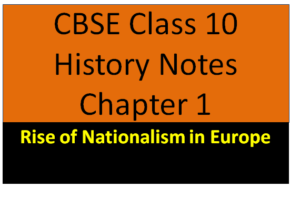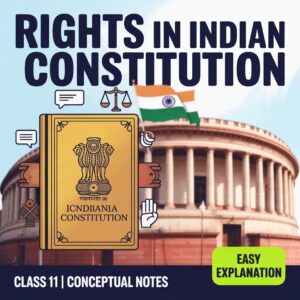
The Making of a Global world
The countries which are present times are very much connected to each other like
- Trades
- Ideas
- Business
- Import
- Export
- Travel etc
Today we are living in the era of Globalisation
Thousand years ago -Globalisation was not emerged .
Present Time- Globalisation is highly emerged
How the normal world turned into a Global world
Globalisation
The movement of goods capital services ideas and people from one nation to other nation is called globalisation
Pre-Modern world
In Ancient time
Travellers traders priests and pilgrims travelled long distances for various purposes
- Knowledge
- opportunities
- spiritual fulfilment
- also used to carry different things like goods, skills , Money , Inventions, germs and diseases.
In Present Time
we have found many evidences of trade link in Ancient times such as cowries (sea shells)→used as currency(trade ) apart from this there are many other examples of Ancient Internationals trade.
Silk Route Link the world(Silk route(silk road)-Trade
- Silk route was a network of a ancient trades routes which connect Asia, Europe, and Africa
- Silk routes existed since before the christian Era till 15th Century
- Many Goods travelled through this route such as Asian market(eastern countries Gold & Silver)→European market(western countries )
- Goods(Chinese silk , Indian textiles , south east Indian spices )
- Chinese silk was travelled through this route, hence it was named the silk route
Was the silk route only used for trade ? No
Chinese Missionaries, Muslim preachers , Buddhist Monks →They also travelled through the silk for spiritual fulfilment promote culture .The Silk route are a good example of vibrant Pre-modern trade and cultural links between distant part of the world
Food Travels:- Spaghetti and potato
Travelled long distances→Food also travelled [Along with travelling people food also used to travel]
- Noodles(Originate from China) →Spaghetti (In western countries)
- Pasta(Originate from Arab’s) → Sicily (Italy)
- Common foods(potato, soya, groundnuts, Maize, tomato, chilli, sweet, potato )
we did not familiar about these food items in early period -Christopher Columbus
16th Century [Christopher Columbus-A famous explorer ]
- Christopher Columbus accidentally discovered America
- that time different types of crops were grown in America
- Europe→familiar with→Potato
- European began to eat better and live longer with the Introduction of humble potato but Potato(very strange)→Cause of Millions of people death.
Europe people became so Independent on Potato
- Ireland(Country in Europe) in Mid 1840’s They grow only potato crop in their fields (but potato crops were destroyed due to diseases
- 1845-1849 about 10 lakh people died to this famine
- The great Irish Famine(potato famine)
Conquest Disease and Trade
- European discovered Asia and America through 16th century
- Sea route →Trade had become easier
- Europe decide to setup colonies
- In 16th Century America was very much rich in terms resources
- Different food crops, precious metals(silver)
- El-Dora do(the city of a gold)
- Europe decided to conquer America
Mid 16th Century
- Portuguese & Spanish→to colonise America →America weak Immune system
- Military /Arms-Not used
- Used germs and diseases(small pox. chicken pox )
- Many people died by these diseases
- Europe easily captured America with the help of disease without using Military and Arms
- Till 19th Century Europe was suffering from different problems
- Diseases, poverty , Religious conflicts
- Till 18th Century India and China was the richest country in the world
- China restricted overseas contacts and retreated into Isolation
- The rising importance of the Americas gradually moved the centre of world trade from china to Europe
- The Europe become the Centre of world trade
The Nineteenth Century 1815-1914
1815-1914 How does Globalisation happen ?
The world changed profoundly in the nineteenth century
Changes
- Economical
- Political
- Social
- Cultural
- Technical
- External relations shaped
19th Century
Economists Identify three types of flows
- Flow of trade(like trade of textile wheat etc)→For travel goods
- Flow of labour(people migration from one place to another place )→For better employment
- Flow of Capital(movement of money from one place to another ) →For Investment
A world Economy Takes Shape
- Traditionally countries liked to be self sufficient in food (wanted to produce own food )
- but this perception was changed in 19th century
Reason
- Britain→High population growth→food demand increased then landed groups pressured the government to restrict the import of food items into the Britain.
- British government agreed and implemented Corn Law
Corn Law and the impact
- The Government restricted the import of corn & other food items in Britain
- Britain’s landed groups got benefit
- Britain become self sufficient in food .
- but food prices increased due to high demand
- People were facing trouble due to the high prices of food items
- Industrialist and urban dwellers Now , they put pressure on the government to remove the corn Laws
- The British government abolished corn laws.
Effect of Abolition of Corn Laws
- Food imported at much cheaper rate than Britain could produce
- British farm could not compete with cheaper imports
- Vast areas of land were now left uncultivated
- Large number of people became unemployed
- Thousands of people migrated toward cities .
Mid-19th Century
- Faster industrial growth in Britain also led to higher incomes and therefore more food imports
- East Europe, Russia, America, Australia Lands were cleared to fulfilled food demand of Britain
- For foods imports will also require transport facilities
- Railway lines were setup to supply food to the ports
- London emerged as new financial centre were capitals were invested
- Shortage of labour in America and Australia.
- So nearly 50 million people migrated from Europe to America
- World wide nearly 150 million people migrated to different places by 1890’s .
Role of Technology
19th Century Major Inventions
- Railways
- Steam ship
- Tele graph
Before 18th Century
- America shipped meat to Europe
- Live animals were shipped from America and these Animals were slaughtered in Europe
Problems
- Occupied more space
- get die or weak or sick on the way.
- this meat was unfit to eat but this meat was very expensive due to high demand
After 1870’s
- Refrigerator were invented
- old ships converted to Refrigerator ships
- Now live animals were being slaughtered in America itself
- And the meat was exported to Europe by keeping it in the refrigerator
Advantages
- It became easy to carry because it occupied less space
- it stayed fresh longer due to refrigerator
- Meat easily available and prices were decreased
- Poor people were able to afford meat easily and take healthy diet
Late Nineteenth Century-Colonialism
- Trade flourished , Markets expanded
- but it was also affecting many countries they experienced
- Loss of freedoms and livelihoods
- painful changes on colonialies , Europe had established lots of colonies .
- Africa was the colony of many European countries
In 1885
The Big European powers met in Berlin
Reason
To divide Africa in various European powers
Rinderpest , or the Cattle Plague
Historically-Africa
- Huge continent
- Sparsely populated
- Lots of resources and minerals
- Animals were in abundance
- Now Europe wants to conquered Africa
- Europeans came to Africa hoping to establish plantations and mines to produce crops and minerals for export to Europe
- European’s observed Shortage of labour in Africa
- Africans labour don’t want to work
Europeans adopted many methods for free African people
- Heavy taxes were imposed which could be paid only by working for wages on plantations and mines
- Inheritance laws were changed only one member of family was allowed to inherit land
- Mine workers were confined to campus not allowed to move freely
During 1880’s Disease -Rinderpest (Cattle plague)
How did Rinderpest come to Africa ?
- It was carried by infected cattle imported from British Asia to feed the Italian soldiers
- Rinderpest spread in Africa like forest fire
- wiped out 90% cattle population
- Africans livelihood were destroyed
- Africans left with no choice but to work in plantation and mines
Indentured labour Migration from India
- Indentured labour → Bounded labour :- A type of labour in which people were hired on the contract basis for a specific time period
In 19th Century
- Britishers sent Indentured labour from India that time Britishers ruled over India
- why they were Migrated ? because of
- Cottage industries declined
- land rents rose
- Lands were cleared for mines and plantations
- poor people failed to pay their rents and debt
- Indian Indentured labours migrate Caribbean Islands , Mauritius, Fiji
- Most of the Indentured labour of India migrate to these three places
Assam India→Tea plantation field
- Indentured labour were also recruited for work on this place
- They had to work in horrible conditions
- They did not have any legal rights
- They were hoping that after leaving here they would not have to live in poverty
- in 1921 Indentured labour system abolished after our Indian national leaders protest against Indentured labour
Indian Entrepreneurs Abroad 19th Century
- Two famous group of bankers and traders Shikaripuri shroff & Nattukottai chettiars who financed export agriculture in central and southeast Asia
- Financially helped to small farmers for expanding their business outside
- Similarly Hyderabad’s Sindhi’s Indian traders and money lenders
- During 1860’s they follow European countries for trade
- They established emporia at different sea ports
Indian Trade colonialism and the Global System
- During 1780’s India →Trade (Cotton clothes ) → Britain
- The Indian cotton textile was getting a lot of profit
- British Industries owners put pressure on the British government to stop export India
- Government implement Tariff barrier increase import tax
- 1800 → 30 % Cotton cloths exported
- 1850 → 15% Cotton cloths exported
- 1870 → 03% Cotton cloths exported , Manufactured cloths decreased and Raw cotton increased
- 1812 → 05% Raw cotton exported
- 1871-35% Raw cotton exported
The Indian market was suffering
- India’s owns clothes were sold less due to high cost but Britain factory male clothes were very cheap so people were preferring to buy them
- Britishers were buying Indian raw cotton at very cheap rate
Britain was getting huge profits (Trade surplus ) They used to
- Britain used this surplus to pay the pension for British officials
- And also used to pay the other country’s bills
The Inter-war economy
- How was the economy during first world war ?
- what was the Impact on the economy due to the First world war ?
Wartime Transformation
1914(world war 1 started) → 1918 (world war 1 ended ) Allied powers Vs Central Powers
Allied powers
- Britain
- France
- Russia
- USA
Central Powers
- Germany
- Austo-Hungary
- Ottoman Turkey
This was the first modern Industrial war
- Machine Guns
- Tanks
- Aircraft’s
- Chemical weapons
Impact of first world war(world war I caused large scale dist ructions )
- 9 million dead and 20 million injured
- Millions of soldiers had to be recruit
- Europe’s working population decreased →Europe’s income also decreased
- During the war women started working in the factories
- Before war male workers but due to war female workers
- Britain had a lot of money before world war 1
- But Britain spent a lot of money during world war 1
- Not only Britain had taken loan but many countries had also taken loan from America
- America had become an International creditor from an International debtor
Post war recovery
- Britain economy was much better before war
- Britain had captured India and Japan market
- when Britain was busy in the war it could not pay attention to the market
- During the wartime Industries start developing in India and Japan
After War
- Britain is not able to gain the same position in the market as before .
- Internationally Britain is unable to compete with the Japanese market
- During war goods increased (Uniforms, Health, Machines, Arms)
- Goods → Production → Employment (Economic boom )
- After war Goods demand decreased
- Goods demand ↓ →Production ↓ → Employment↓
Agricultural Economy
- Before war Eastern Europe was a major producer of wheat
- During war wheat production was decreased in Europe but Canada US Australia , these countries started producing wheat during war
- due to high demand of wheat these countries got lots of profit and became major wheat producer
- After war Europe started production of wheat again
- wheat overproduced , & wheat prices decreased
- Agricultural crisis occurred
Rise of Mass production and consumption
- world war 1 Many countries affected by world war first
- America were also affected by world war first
- but America’s economy recovers very quickly from war
America’s Economy (A new Important feature is produced )
- Mass production-if something is produced on a large scale, it is called Mass Production .
- Mass production concept was build by Henry ford (founder of Food motors)
- known as Pioneer of Mass production
- Henry ford used Assembly line method
- benefit of Assembly line method the work gets done quickly , the production cost was very cheap
- T-Model Ford world’s first Mass produced Car
- in 1914 Henry ford doubled the daily wage to five dollar .
Car Production
- 1919-2 Million
- 1929-5 Million
- also white goods production like Fridge, washing machines, Radio
- prices were declined due to mass production
- Housing boom-US people’s started buying these things for pro porous living standard
- This way US recovered quickly
The Great Depression Period of economic declined (depression)
1929 → 1930’s
- Production declined
- Employment declined
- Income declined
- Trade declined
Reason of Great Depression
- Over producing of agricultural goods
- Agriculture goods were produced in huge scale after war
- Agriculture goods prices were declined
- Farmers Income declined
- withdrawal of America US loans
- European banks were failed
- Currencies were collapsed
- America (US) doubling import duties
Impact of Great depression on America (US)
- The banks had stopped giving loans to the people
- The banks started withdraw loans
- The farms were distressed
- Households were ruined
- Business were collapsed
- Unemployment were increased
India and the Great depression
Impact of great depression on India
Early 19th Century India
- Major exporter of Agricultural goods
- Major importer of manufactures
Great depression (1929-1934)
- Import and export was halved
- wheat prices were reduced 50%
- savings, lands, Jewelleries Precious metals by selling these things India paid taxes to the Britishers
Rebuilding a World Economy-The Post war Era
WW1 →After two decades(after 20 years) WW2 (1939-1945)
Allied powers WW2
- Britain
- France
- Soviet Union
- America
Central Powers WW2
- Nazi Germany
- Japan
- Italy
Impact of world war 2
- 60 million population of the world’s were died
- about 3% population were died
- Millions more were injured
- More civilians were died rather than soldiers from war related causes
After world war 2
- America Emerging as dominating power in western world
- Soviet Union Emergence as dominating power in Eastern world
Post war settlement and the Bretton woods Institutions
- After war Discussions were held by different countries for Post War recovery
Preservation of Economic stability
- Economic stability
- Mass production
- Mass consumption
- Good Income
- Better Employment
- Government Provides Employment
Economic links with Outside world
- flow of trade
- flow of labour
- flow of capital etc
July 1944 Bretton Woods Hampshire (USA)
United nations Monetary and financial conference (UNMFC)
Bretton wood Institutions
- International Monetory fund IMF
- International Bank for Reconstruction & Development IBRD
International Monetory fund IMF
- To deals with external surplus and deficit of its member nations
International Bank for Reconstruction & Development IBRD
- To support countries financially for reconstruction after war
- USA dominance was more in these institutions in decision making
- This System was working under in fixed exchange rate
- 35 dollar=Per Ounce of gold
The Early Post war years
1950’s-1970’s
- This period was mostly stable because world trade grew annually at over 8% (the growth was also mostly stable without large fluctuations )
- Developing countries were in a hurry to catch up with the advance industrial countries
Decolonisation and Independence
- After the end of world war 2 over the next 20 years most colonies in Asia and Africa emerged as free independent nations
- Poverty
- Hunger
- Lack of resources
- Bretton wood institutions only supported developed countries not supported on developing countries
- Developing countries →Organised →G77→NIEO(New International Economic Order)
NIEO
- A system that would given them real control over their natural resources.
- Fair prices for raw materials b\
- better access for their manufactured goods in developed countries markets
End of Bretton woods and the beginning of ‘Globalisation’
- After 1960’s US economy started going down because of rising cost of overseas involvement
- The US Dollar now no longer commanded confidence as the worlds principal currency
- fixed charge converted to floating exchange rate
- developing countries initially takes loan from International Institutions but forced to takes loans from western commercial banks & private landing Institutions
- high interest rate developing countries Gone into debt, Income decreased , poverty Increased
- specially Africa and Latin America their economic condition were worsened
India & China
- wages were relatively low in countries in china. thus they become attractive destinations for investment by foreign MN C’s competing to capture world markets
- Similarly India have undergone rapid economic transformation.






